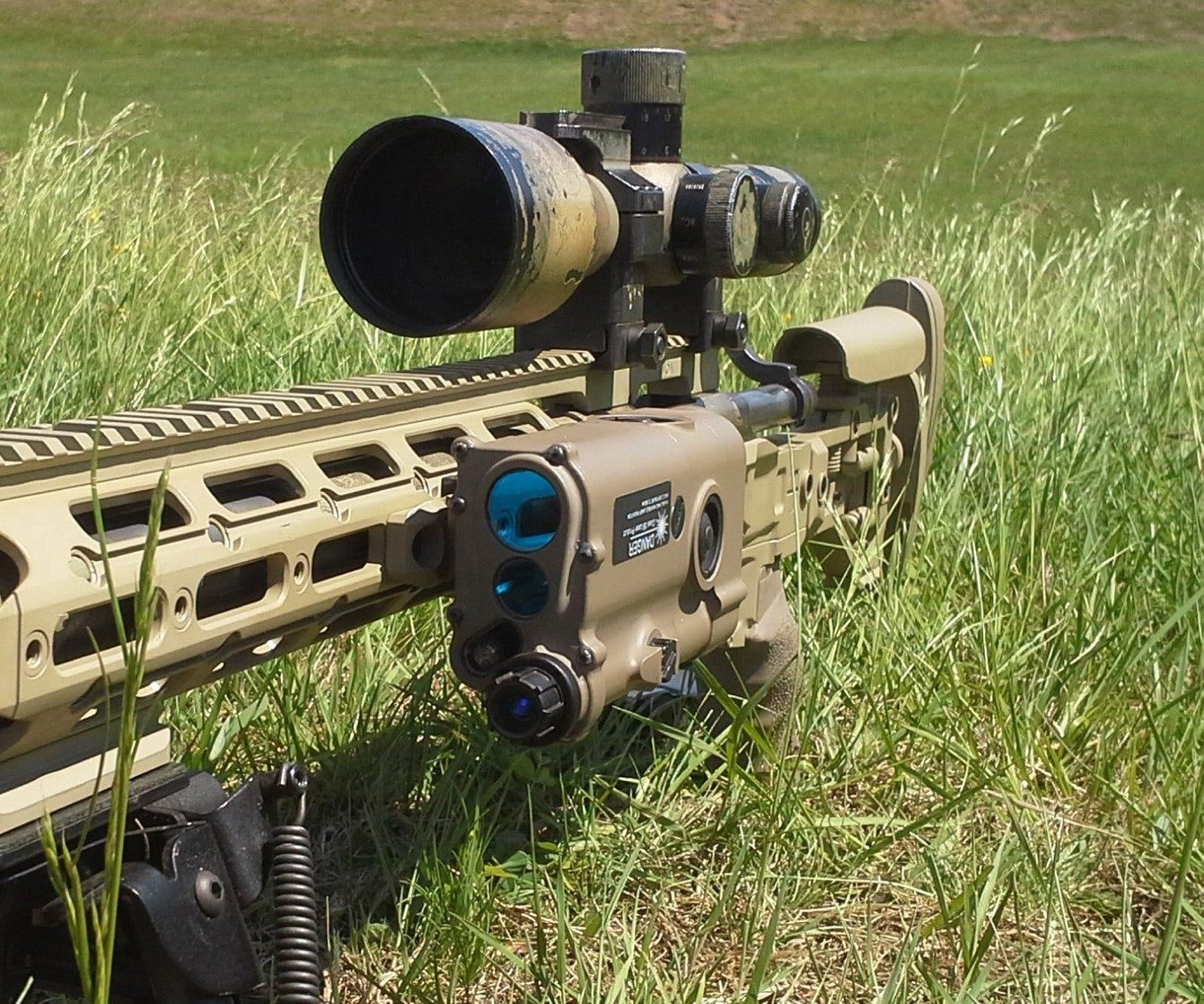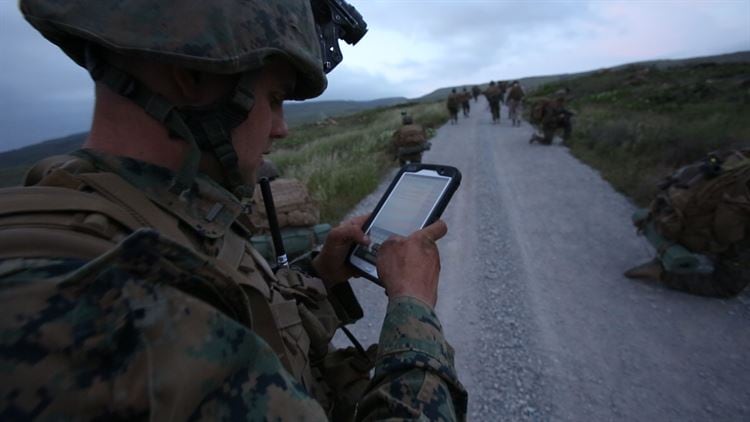The Corps is on the cusp of further integrating touch screen tablet and smartphone technology that will aid Marines calling in accurate air artillery strikes.
It’s the latest development by the Marine Corps to procure small lightweight systems to aid infantry Marines in rapidly acquiring targets, as the force adapts to modern and rapidly rising near-peer competitor threats.
On Feb. 7 Marine Corps Systems Command submitted a request for solicitation for the MAGTF Common Handheld, or MCH, putting it one step closer to fielding a small handheld tablet-sized device that will increase the lethality of Marines on the battlefield.
The MCH uses existing smartphone technology to aid Marines in rapidly pinpointing targets for air and artillery strikes, and serves as a lightweight communications device that increase situational awareness and overall command and control on the battlefield.
“Take a Marine who is out on patrol and needs to send a spot report of a suspicious activity. With a swipe of an app they will be able to send information to the central command without having to boot up a laptop,” said Lt. Col. Tamara Campbell, a SYSCOM product manager, in a command release. “What Marines will have is a device that they know is secure and will not compromise their position.”
The new devices will be fielded to infantry squad leaders sometime in fiscal year 2019.
But it’s a long time coming for a technology that’s been in the hands of civilians all across the globe for more than a decade.
For the military, secure communications has been the Achilles heel for tablet and smartphone technology. Today’s off-the-shelf cellphones can easily be exploited by hackers and other sophisticated nation-state adversaries.

So the Corps partnered with the National Security Agency’s Commercial Solutions for Classified program, which aids the military in taking commercial products and reprogramming them to operate in classified environments.
“Up until this point, handheld commercial devices used for tactical purposes had to be reprogrammed with military-owned security not found in the original device,” said Maj. Kevin Shepherd, a SYSCOM program lead, in a command release. “Working with CSfC, we are using their approved list of devices. These devices will all have multiple layers of encryption, both on the phone and in transmission. If obtained by the wrong person, our devices should withstand any hacks long after the tactical information loses value.”
The new tablets are not the only devices the Corps is seeking to procure in order to rain down more accurate fires on enemy forces.
Recently the Corps selected a small rifle-mounted laser range finder called the Integrated - Compact Ultralight Gun-mounted Rangefinder, or ICUGR, manufactured by Safran Optics 1. The device will allow infantry squad leaders to accurately and rapidly range targets for strikes.
RELATED

And the Marines are also in the process of replacing older and bulkier laser designators that aid ground forces in guiding laser-guided munitions to their targets, a device that will also function in the event a sophisticated adversary jams GPS systems.
The new MCH device will allow “the war fighter to quickly acquire targets in day, night, and near all-weather visibility conditions; and control close air support (CAS) as well as artillery and Naval surface fire support missions,” the solicitation reads.
Shawn Snow is the senior reporter for Marine Corps Times and a Marine Corps veteran.




